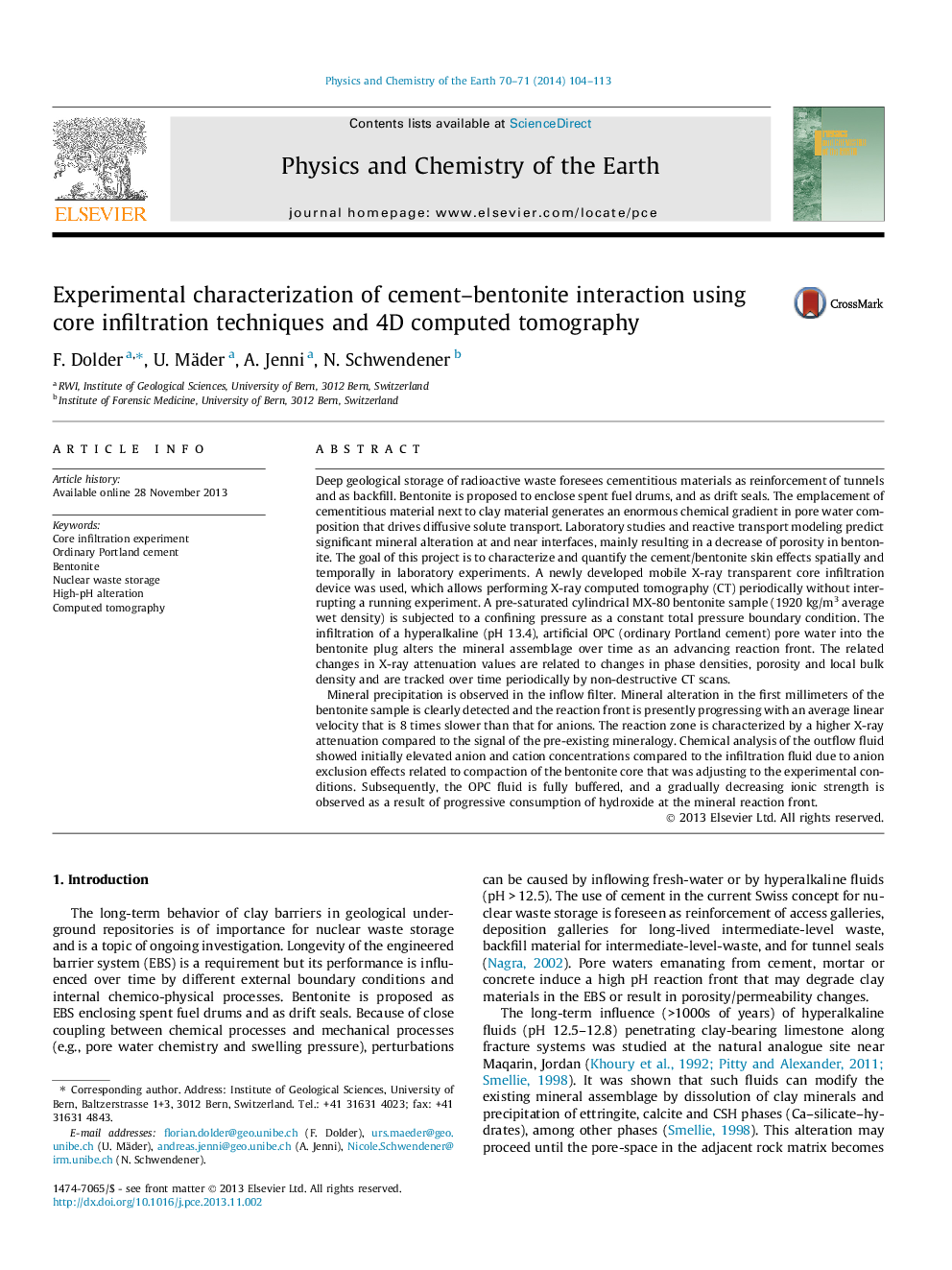| کد مقاله | کد نشریه | سال انتشار | مقاله انگلیسی | نسخه تمام متن |
|---|---|---|---|---|
| 4720987 | 1639355 | 2014 | 10 صفحه PDF | دانلود رایگان |

• Bentonite core infiltration experiment using high-pH cementitious infiltration fluid.
• Tracking ongoing mineral reactions in a running experiment using CT.
• Increase in X-ray attenuations in the reaction zone due to mineralogical alteration.
Deep geological storage of radioactive waste foresees cementitious materials as reinforcement of tunnels and as backfill. Bentonite is proposed to enclose spent fuel drums, and as drift seals. The emplacement of cementitious material next to clay material generates an enormous chemical gradient in pore water composition that drives diffusive solute transport. Laboratory studies and reactive transport modeling predict significant mineral alteration at and near interfaces, mainly resulting in a decrease of porosity in bentonite. The goal of this project is to characterize and quantify the cement/bentonite skin effects spatially and temporally in laboratory experiments. A newly developed mobile X-ray transparent core infiltration device was used, which allows performing X-ray computed tomography (CT) periodically without interrupting a running experiment. A pre-saturated cylindrical MX-80 bentonite sample (1920 kg/m3 average wet density) is subjected to a confining pressure as a constant total pressure boundary condition. The infiltration of a hyperalkaline (pH 13.4), artificial OPC (ordinary Portland cement) pore water into the bentonite plug alters the mineral assemblage over time as an advancing reaction front. The related changes in X-ray attenuation values are related to changes in phase densities, porosity and local bulk density and are tracked over time periodically by non-destructive CT scans.Mineral precipitation is observed in the inflow filter. Mineral alteration in the first millimeters of the bentonite sample is clearly detected and the reaction front is presently progressing with an average linear velocity that is 8 times slower than that for anions. The reaction zone is characterized by a higher X-ray attenuation compared to the signal of the pre-existing mineralogy. Chemical analysis of the outflow fluid showed initially elevated anion and cation concentrations compared to the infiltration fluid due to anion exclusion effects related to compaction of the bentonite core that was adjusting to the experimental conditions. Subsequently, the OPC fluid is fully buffered, and a gradually decreasing ionic strength is observed as a result of progressive consumption of hydroxide at the mineral reaction front.
Journal: Physics and Chemistry of the Earth, Parts A/B/C - Volumes 70–71, 2014, Pages 104–113